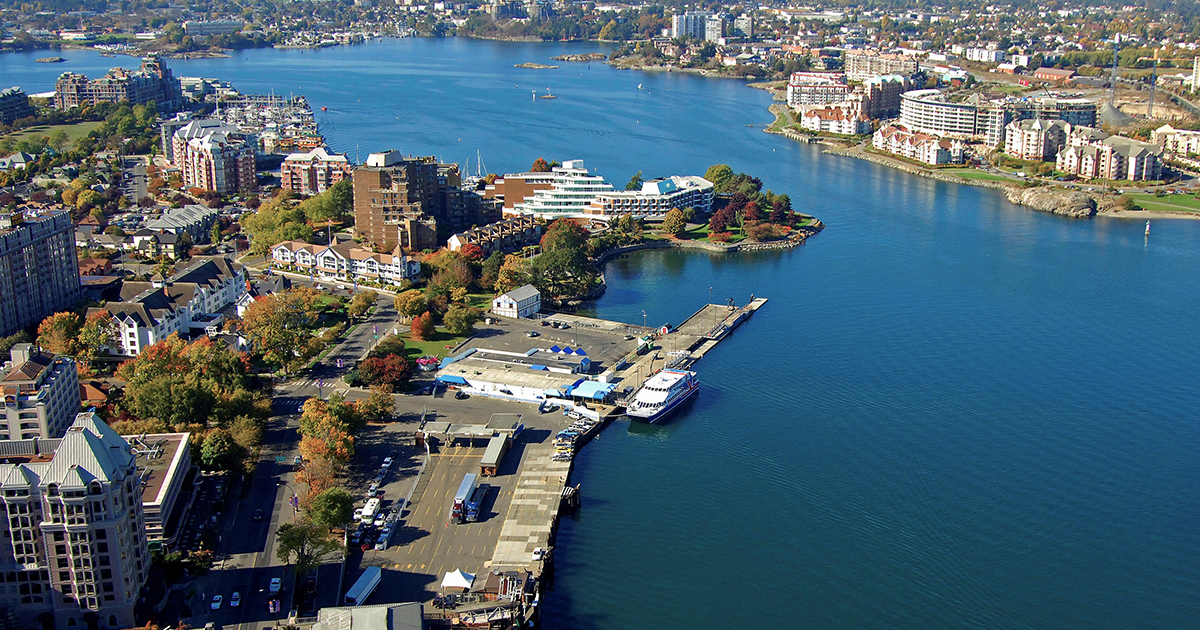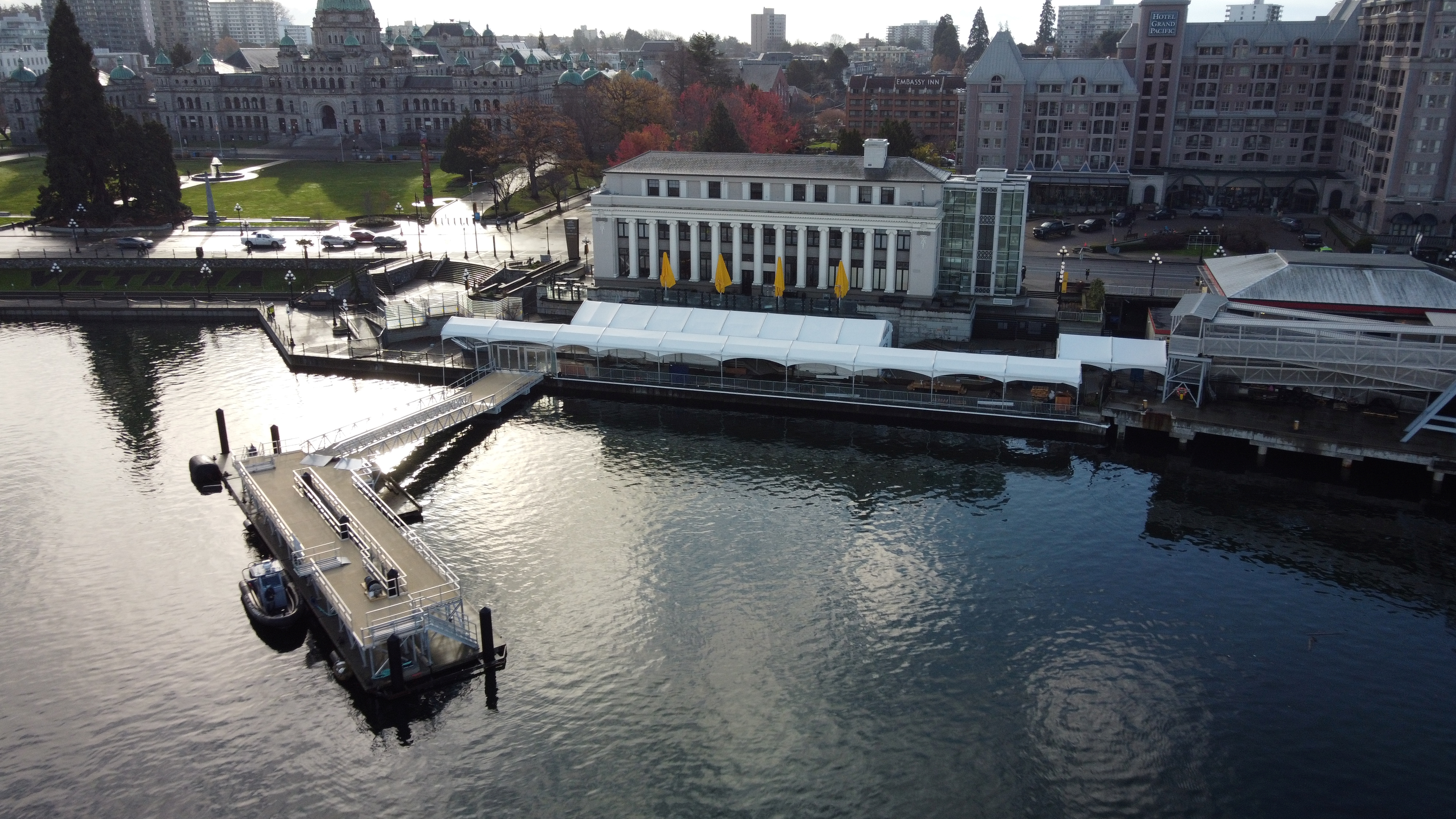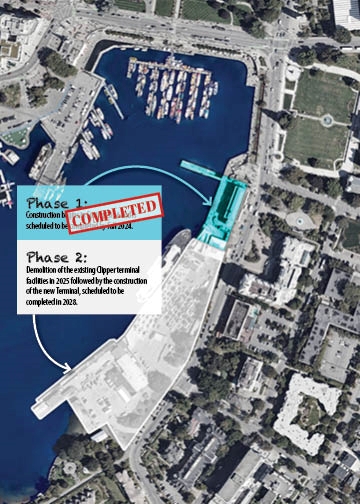Belleville Terminal Redevelopment Project - Project Overview

The Belleville Terminal Redevelopment Project will build a modern preclearance terminal in Victoria's Inner Harbour, making travel more convenient and enhancing security and trade between Vancouver Island and Washington State.
Context
Belleville Ferry Terminal is a provincially owned, privately operated international marine vehicle and passenger terminal in Victoria, British Columbia. It provides cross-border transportation services between Vancouver Island and Washington State. This terminal serves as an important international goods and services gateway for Canada, British Columbia, and the Vancouver Island region. In 2019, it supported approximately 2,200 jobs, processed more than 680,000 travellers and provided significant tourism and economic benefits.
Purpose
- Provide a safe and secure, modern, inclusive international port of entry and terminal facility that will meet obligations under the Canada-US Land, Rail, Marine, and Air Transport Preclearance Agreement (LRMA)
- Provide a terminal facility that responds to current and long-term operational and environmental requirements
- Create a transportation gateway and welcoming port of entry that continues to drive the economy and supports the social and cultural values of the people of British Columbia and Canada
Policy Objectives
- Invest in a sustainable economy
- Support tourism, arts, culture and sport sectors
- Help BC businesses access international markets and attract international investment to the Province
- Foster stronger ties across the Pacific Northwest (Cascadia Innovation Corridor)
- Support and advance true and lasting reconciliation with Indigenous peoples
- Facilitate an environment of accessibility and inclusivity to reflect the diversity of British Columbians and international terminal users
Current Status
On June 30, 2023, the Province announced the Belleville Terminal Redevelopment Project. Phase 1 was completed in February 2025.
Phase 1 Scope:
- Modifications and expansion of the Steamship wharf to temporarily accommodate the Clipper vessel.
- Modifications and construction of a temporary tensile structure addition to the lower level of the Steamship building to provide a temporary terminal for Clipper.
- Construction of a temporary covered walkway between the Black Ball and the Steamship buildings to accommodate Clipper passengers.
- Modifications to the Steamship building to provide a temporary administration space for US Customs and Border Protection.
- Modifications to the Black Ball building to accommodate Canadian Border Services Agency operations.
Below: Completed wharf modifications and temporary terminal

Construction of Phase 2 of the project is now underway. Through a competitive request-for-qualifications and request-for-proposal (RFP) process, Pomerleau Inc. has been awarded the design-build contract.
Phase 2 Scope:
- Demolition of existing Clipper terminal infrastructure and replacement of ageing wharf facilities.
- Construction of a new pre-clearance terminal building with modern border security standards.
- Construction of a new commercial goods processing facility.
- New terminal building will support accessibility and CleanBC with the following criteria:
- Will achieve Rick Hansen Foundation Accessibility Gold Certification™ (RHFAC) as a building with meaningful accessibility for everyone in public spaces;
- LEED® Gold certification and the Province’s Environmental Stewardship Policy standards will be the minimum requirements for the Project.
- New terminal to include commercial retail units.
- Improvements to Belleville Street including sidewalks and walkways.
What to expect during Phase 2:
- Continued closure of pedestrian access along the causeway between the Inner Harbour and the Steamship building.
- Large temporary tensile structure along the causeway between the Inner Harbour and the Steamship building operating as the Clipper ferry terminal.
- Clipper vessel docking at the Steamship wharf.
- Construction impacts including noise, vibration, traffic, and other impacts.
- Removal of trees between Oswego Street and Pendray Street.
- Potential for managed traffic disruptions due to construction activity.
Schedule
Phase 1: Completed February 2025
Phase 2: Demolition of the existing Clipper terminal facilities in 2025 followed by the construction of the new Terminal, scheduled to be completed in 2028.

Cost
The project has an approved budget of $416 million.
Page Navigation
Contact information
Friendly URL for this page:
gov.bc.ca/bellevilleterminal
The phone line below is available 24/7 for construction-related concerns or emergencies only.
1-888-271-2839
